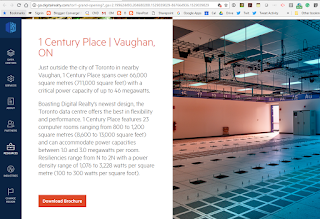Marking another essential step in standardization of 5G, the 3GPP officially approved the completion of the standalone (SA) Release 15 5G specifications.
The completion of 5G SA (standalone) follows the release of the 5G NR specifications for non-standalone (NSA) operation in December 2017. This not only gives 5G NR the ability of independent deployment, but also brings a brand new end-to-end network architecture.
 Balázs Bertényi, Chairman of 3GPP TSG RAN, said: “The freeze of Standalone 5G NR radio specifications represents a major milestone in the quest of the wireless industry towards realizing the holistic 5G vision. 5G NR Standalone systems not only dramatically increase the mobile broadband speeds and capacity, but also open the door for new industries beyond telecommunications that are looking to revolutionize their ecosystem through 5G.”
Balázs Bertényi, Chairman of 3GPP TSG RAN, said: “The freeze of Standalone 5G NR radio specifications represents a major milestone in the quest of the wireless industry towards realizing the holistic 5G vision. 5G NR Standalone systems not only dramatically increase the mobile broadband speeds and capacity, but also open the door for new industries beyond telecommunications that are looking to revolutionize their ecosystem through 5G.”
Erik Guttman, Chairman of 3GPP TSG SA, stated: “The agreed completion of the stage 3 freeze milestone for the 5G standalone system has great significance. The 5G System specification has now reached its official stage of completion, thanks to the intense efforts of hundreds of engineers over the past three years. A special acknowledgment is due to those who led this remarkable effort in diverse committees. 5G promises a broad expansion of telecommunications, as an ever more central component of our economies, societies and individual activities. The 5G System opens the way for commercialization of services based on the New Radio and 5G Core Network and their advanced extensible capabilities. The new system provides the foundation for ongoing specialization for support of new business sectors, for unlike 4G and past generations, 5G supports the very specific requirements and individual service characteristics of diverse communications. Already, 3GPP activities have begun to leverage the 5G system to realize opportunities in areas such as industrial automation. This activity will intensify in the months and years to come, in increasingly many sectors, all on the foundation of the work that has been achieved on this occasion.”
The completion of 5G SA (standalone) follows the release of the 5G NR specifications for non-standalone (NSA) operation in December 2017. This not only gives 5G NR the ability of independent deployment, but also brings a brand new end-to-end network architecture.
 Balázs Bertényi, Chairman of 3GPP TSG RAN, said: “The freeze of Standalone 5G NR radio specifications represents a major milestone in the quest of the wireless industry towards realizing the holistic 5G vision. 5G NR Standalone systems not only dramatically increase the mobile broadband speeds and capacity, but also open the door for new industries beyond telecommunications that are looking to revolutionize their ecosystem through 5G.”
Balázs Bertényi, Chairman of 3GPP TSG RAN, said: “The freeze of Standalone 5G NR radio specifications represents a major milestone in the quest of the wireless industry towards realizing the holistic 5G vision. 5G NR Standalone systems not only dramatically increase the mobile broadband speeds and capacity, but also open the door for new industries beyond telecommunications that are looking to revolutionize their ecosystem through 5G.”Erik Guttman, Chairman of 3GPP TSG SA, stated: “The agreed completion of the stage 3 freeze milestone for the 5G standalone system has great significance. The 5G System specification has now reached its official stage of completion, thanks to the intense efforts of hundreds of engineers over the past three years. A special acknowledgment is due to those who led this remarkable effort in diverse committees. 5G promises a broad expansion of telecommunications, as an ever more central component of our economies, societies and individual activities. The 5G System opens the way for commercialization of services based on the New Radio and 5G Core Network and their advanced extensible capabilities. The new system provides the foundation for ongoing specialization for support of new business sectors, for unlike 4G and past generations, 5G supports the very specific requirements and individual service characteristics of diverse communications. Already, 3GPP activities have begun to leverage the 5G system to realize opportunities in areas such as industrial automation. This activity will intensify in the months and years to come, in increasingly many sectors, all on the foundation of the work that has been achieved on this occasion.”





















